Animals
-
 Animals
AnimalsWhales feast when hatcheries release salmon
Whales: “They’re 40 feet long and they’re feeding on fish that are the size of my finger.”
By Susan Milius -
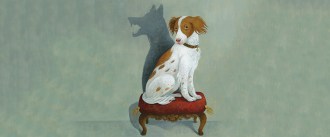 Genetics
GeneticsDNA evidence is rewriting domestication origin stories
DNA studies are rewriting the how-we-met stories of domestication.
-
 Animals
AnimalsThe blue wings of this dragonfly may be surprisingly alive
The wings of adult morpho dragonflies show tiny respiratory channels that may support a complex of nanostructures that shine blue.
By Susan Milius -
 Genetics
GeneticsHorse version of ‘Who’s your daddy?’ answered
Genetics and horse pedigrees reveal all modern domestic stallions’ sires.
-
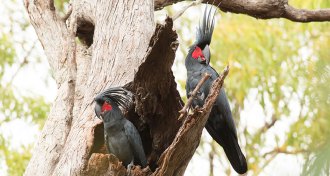
-
 Plants
PlantsFloral curve test shows what’s great for a moth is not so good for a flower
3-D printed flowers reveal a hidden conflict between a hawk moth and the flowers it pollinates.
By Susan Milius -
 Animals
AnimalsDrowned wildebeests can feed a river ecosystem for years
Only a small percentage of wildebeests drown as they cross the Mara River, but they provide resources for the river ecosystem for years after their deaths.
-
 Animals
AnimalsThis glass frog wears its heart for all to see
A newly discovered glass frog species has skin so clear that it reveals most of the animal’s internal organs, including the heart.
-
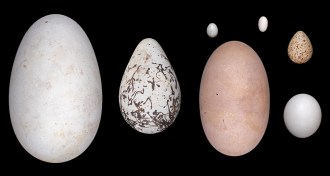 Life
LifeFlight demands may have steered the evolution of bird egg shape
An analysis of nearly 50,000 bird eggs finds a link between a species’ egg shape and flight ability.
-
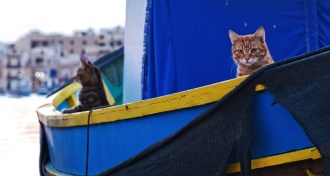 Genetics
GeneticsDNA reveals how cats achieved world domination
Analysis of 9,000 years of cat remains suggests two waves of migration
-
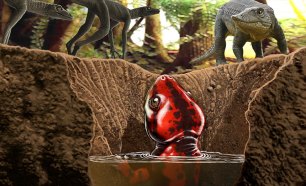 Paleontology
PaleontologyNew fossils shake up history of amphibians with no legs
The oldest near-relative of today’s snake-shaped caecilians could have an unexpected backstory.
By Susan Milius -
 Animals
AnimalsFacial recognition changes a wasp’s brain
A new study maps genes at play in a paper wasp’s brain during facial recognition.